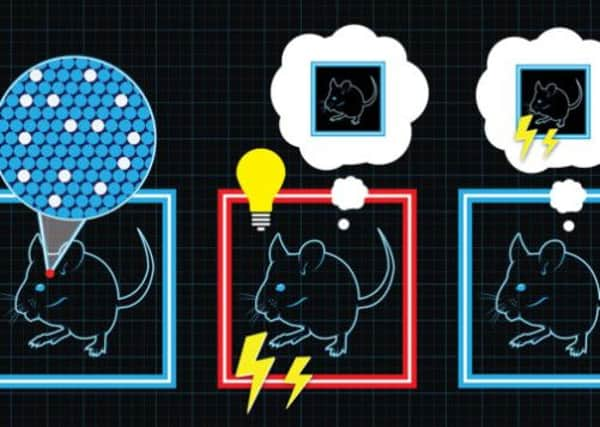Scientists plant ‘false dreams’ in mice


Using a novel technique called ‘optogenetics’, the researchers from MIT programmed a set of genes associated with memories in the mice to respond to light.
They then placed the mice in two chambers, one of which delivered a mild electric shock and one which didn’t. Whilst in the electrified chamber, the mice had the memory of the safe chamber stimulated by light.
Advertisement
Hide AdAdvertisement
Hide AdWhen the mice re-entered the safe chamber, they froze in fear - falsely remembering that they had been shocked there. Intriguingly, these false memories were identical in nature to the true memories of the electrified chamber.
The research, published in the latest edition of Science, could help explain how false memories form in humans - it has been well-documented in court cases that witnesses can provide widely varying accounts of the same events.
Neuroscientists have long puzzled over where exactly memories are stored, Prof Susumu Tonegawa, senior author on the paper, said that this study could help answer questions like “is the information spread out in various parts of the brain, or is there a particular area of the brain in which this type of memory is stored?”
The team are now planning future studies to experiment with how far they can go. Graduate student and lead author Steve Ramirez said “what about false memories for more than just contexts — false memories for objects, food or other mice? These are the once seemingly sci-fi questions that can now be experimentally tackled in the lab.”